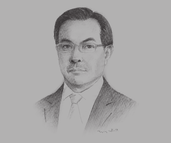How is ASEAN harmonising regulatory standards for drugs and pharmaceutical products?
VIRAPATNA: While the member states of ASEAN have been discussing the harmonisation of pharmaceutical standards for quite some time, this initiative admittedly has not been moving forward as quickly as we hoped. Although the region has made strides in bringing standards in line with international norms, to a large extent regulation still varies country by country. The ultimate goal is for a pharmaceutical producer based in Thailand, for example, to be able to provide its products across the entire region, but that is not yet reality. Regulation differs on issues such as protectionism of local markets and the overall readiness of adopting higher standards.
One positive step for Thailand is that the Thai Food and Drug Administration acceded to the Pharmaceutical Inspection Co-operation Scheme in August 2016, joining a group of 49 participating authorities from across all continents in harmonising inspection procedures and developing common standards. Thailand joins Indonesia, Malaysia and Singapore as the only ASEAN members currently complying with this endeavour. While this is undoubtedly a positive and necessary step in improving the nation’s pharmaceutical standards, drawbacks exist in that local standards will eventually be even further from those of non-signatories within the region. ASEAN must follow the example of other common trade areas in uniformly accepting common regulation so that the significant growth potential of this sector in the region can be realised.
What is needed in pharmaceutical research and development (R&D), and how is the government supporting these efforts?
VIRAPATNA: One important factor to consider when discussing the need for R&D is the difference between entirely new products and generic versions of those same products. I believe that, although the development of entirely new solutions to existing diseases is paramount, a certain amount of expertise and technology is also required to make generic versions of those products.
At the moment, the government has developed the Thailand 4.0 policy. The policy encourages and paves the way for Thailand to develop local industries. It is with this policy in mind that the pharmaceutical business has to continually develop and invest in R&D on a local level..
What is the market composition of private and public hospitals, and how does this affect public perception of the pharmaceutical segment?
VIRAPATNA: While the private health care sector is indeed growing in terms of foreign and affluent patients within urban centres such as Bangkok, when looking at the raw numbers, private hospitals still do not service a significant percentage of the local population. Whereas usage rates are low and prices of health care provision are high in private hospitals, the opposite is true of government hospitals. That being said, the level of price control being implemented to keep health care costs low at government hospitals does have adverse effects on near investment and innovative products. Price controls can often result in the oversubscription of drugs and medicines. I believe that leaving the price of pharmaceutical goods to market forces is the most efficient mechanism.
Furthermore, educating the public about pharmaceuticals they are ingesting is key and can prevent such prices. The perception of the pharmaceutical industry is often that the sole focus is making a profit. However, as competition and the need for research increases as the demand for medicine rises, a shift in mindset is needed to realise that pharmaceuticals are both a necessity and a public good.

